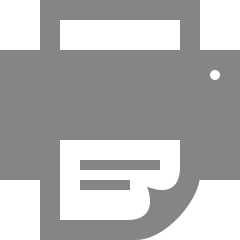Myth: If it’s on the Internet, it’s in the public domain.
Mostly False.
“Public domain” refers to works which are NOT protected by copyright law. There are only three ways in which something can be considered “public domain”:
- The work is not subject to copyright protection in the first place. For example, ideas and facts, titles and names, short phrases and slogans, or government works.
- The work has been assigned to the public domain by its creator. For example, some works may be marked “No Rights Reserved”, which would indicate the creator intends for it to be public domain (more about this option here).
- The work’s copyright protection has expired. All works published in the US before 1923 are in the public domain. After 1923, it’s a complicated determination, due to changes in copyright law, and you should consult a lawyer before relying on that assumption.
Just because you see a work on the Internet does not necessarily mean that is in the “public domain.” The Internet may be free for everyone to use, but people don’t lose their copyrights just because their creations are posted on the web. The Internet is no different than a newspaper or TV or billboard: it’s simply a medium for displaying creative works such as photos, art or writing. Where or how a creative work is displayed does not impact its protection by copyright law.
If you want to use works that are in fact in the public domain, either look for works marked “No Rights Reserved,” look for works that were published in the US prior to 1923 or visit one of several sites which provide public domain items, for example:
- Smithsonian Institution Public Domain Images
- New York Times Public Domain Archives
- Project Gutenberg, a collection of public domain electronic books
Myth: If it doesn’t have a name or a © on it, it’s in the public domain.
Mostly False.
A work may still be protected by copyright law whether or not there is a name or a © (copyright symbol) on it. A creator obtains their rights in a work by taking their creative idea and expressing it in a tangible form – writing it down, putting it on paper, performing it, taking a picture of it, etc. Unless there is some other concept of law involved, like “work for hire,” this creator maintains all their copyrights in the work, even absent a © symbol or their name. And, again, the only way something becomes “public domain” is one of the three ways listed above.
If you see an unmarked image or work on the Internet that you want to use, contact the owner of the website to find out who owns it and to request permission before you use it, or you will risk infringement claims.
Myth: If I credit the source, it’s “fair use.”
False.
Copyright infringement is different than plagiarism. And “fair use” isn’t what it sounds like.
Crediting the source is merely attribution, which will avoid plagiarism. But copyright law requires permission, not attribution.
There is a possibility that a particular use could be considered “fair use,” but that is not a clear determination. There are a limited number of uses which are permitted as “fair use,” such as for criticism, commentary, news reporting, teaching, scholarship or research. Despite these clear categories, the courts will still consider a series of factors in determining whether something was “fair use,” such as whether the use was for commercial or non-commercial use, the amount and substantiality of the portion of the work used as compared to the whole work and more. Simply put, “fair use” is a defense to what would otherwise be considered infringement.
So, if you find a work you want to use, if it’s not in the public domain (see above), if you haven’t determined that your contemplated use is definitively “fair use” and if you don’t have permission, it’s infringement, whether or not you credit the source.
***
If you want to learn more about copyright law, fair use and public domain, the U.S. Copyright Office provides many resources on their webpage or give us a call.
Ashley Dobbs is a shareholder of the firm focusing her practice in intellectual property. She can be reached at adobbs@beankinney.com or 703.526.4701.

